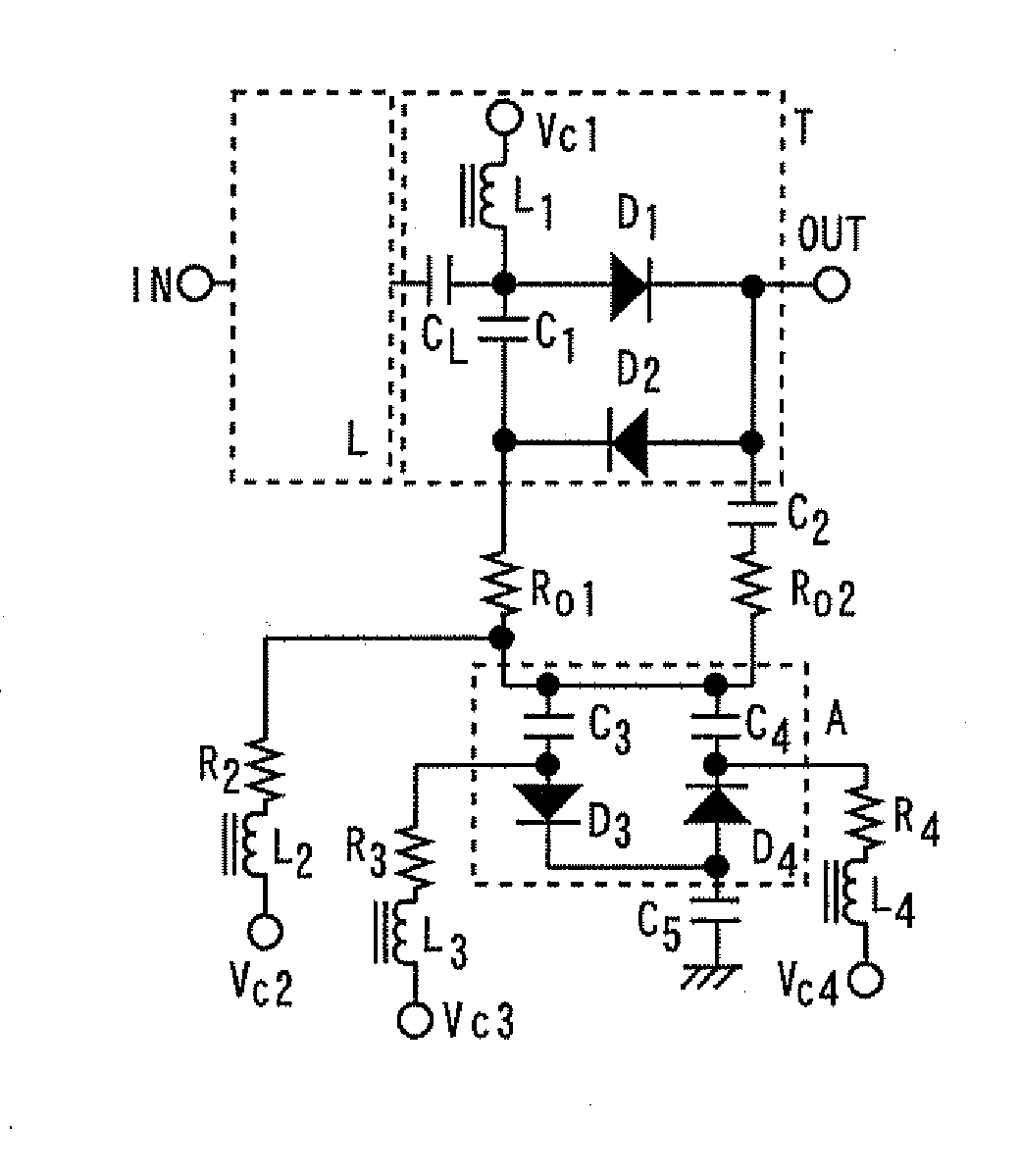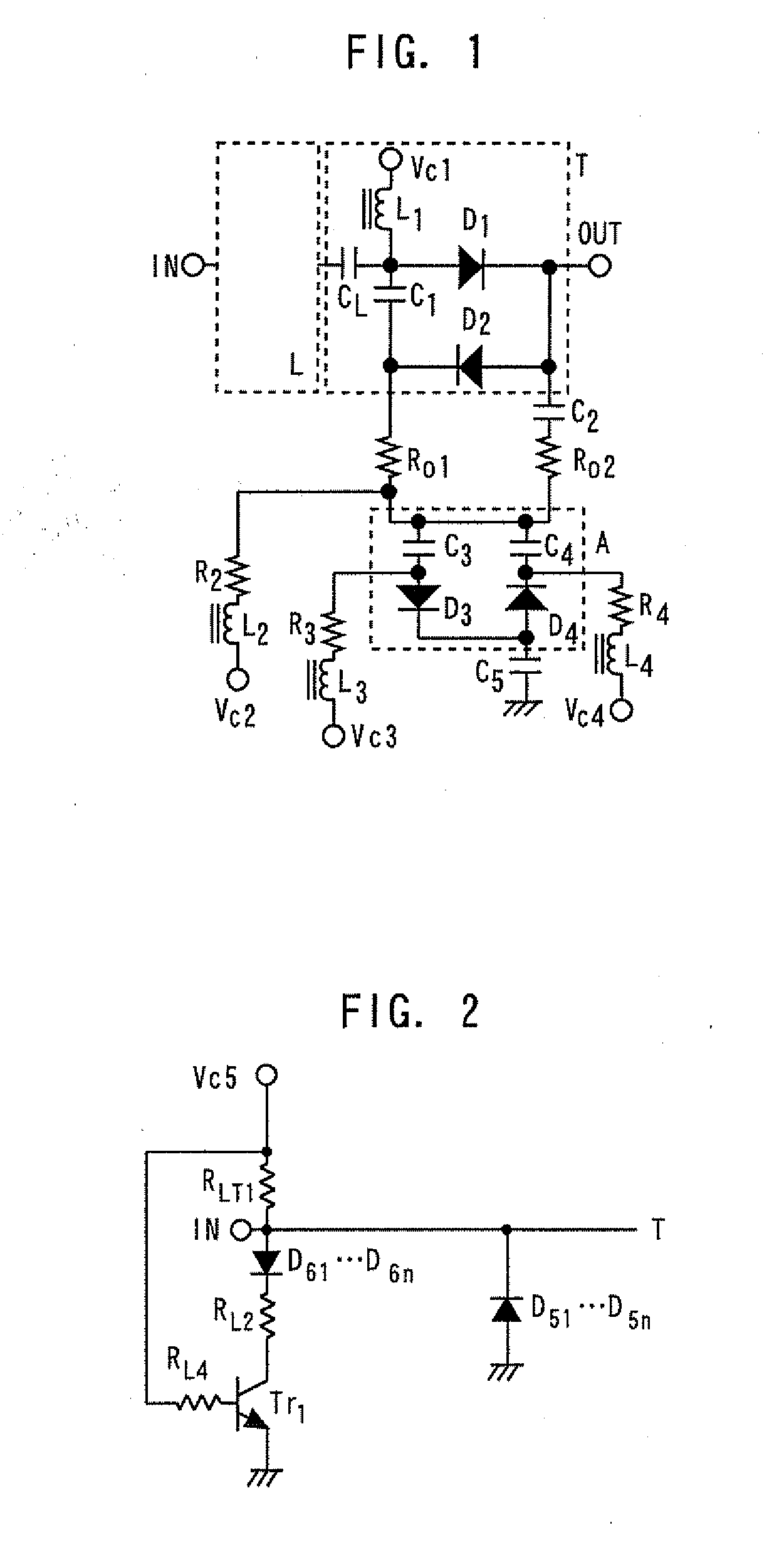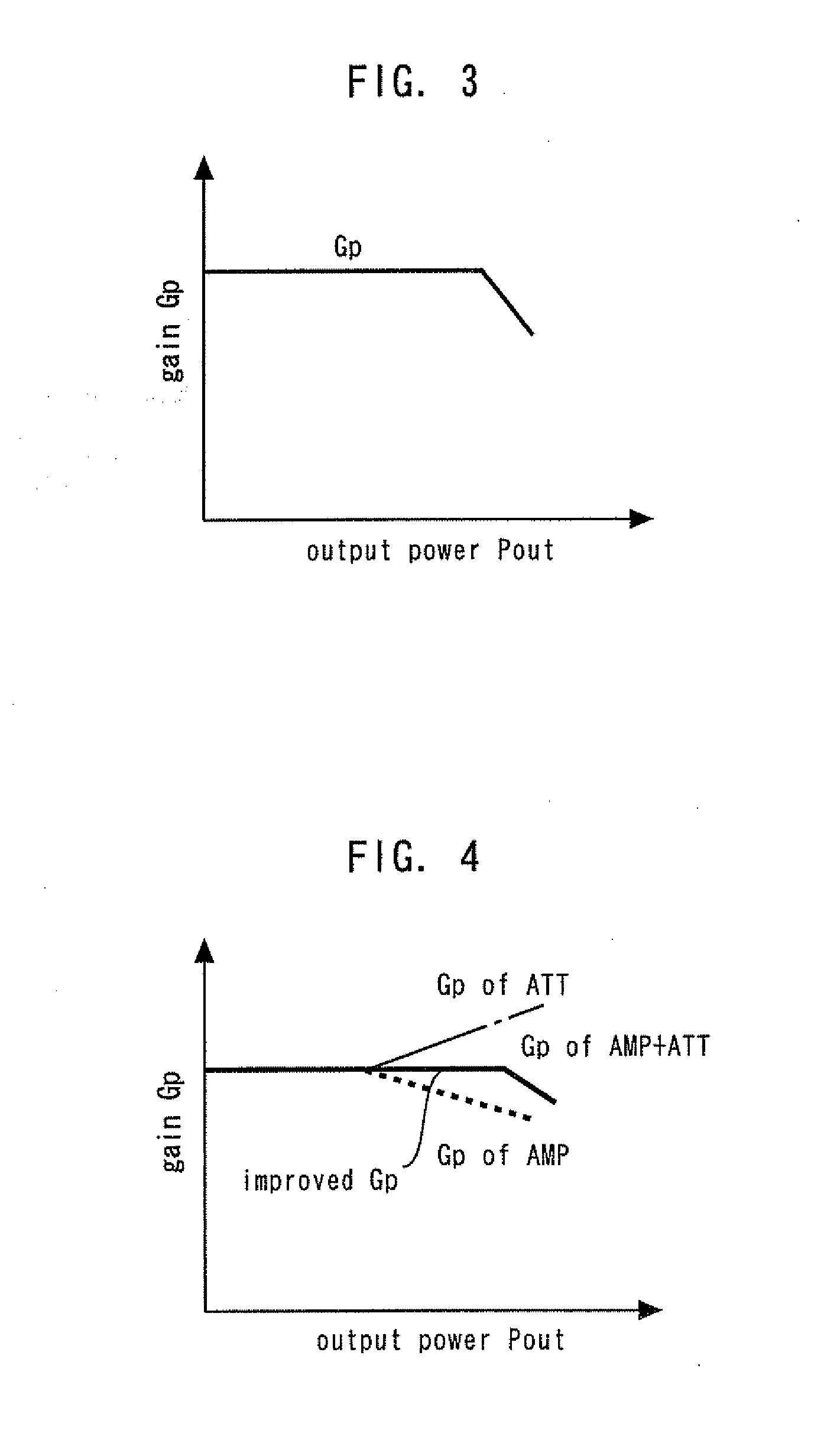Attenuator
a diode attenuator and stacked type technology, applied in the direction of frequency-independent attenuators, automatic control of pulses, amplifiers, etc., can solve the problems of no degree of freedom in the structural design of the bc layer, and it is not possible to form a switch, so as to improve the characteristic of distortion, improve the flat section of the gain gp, and improve the characteristic of tertiary distortion pim3
- Summary
- Abstract
- Description
- Claims
- Application Information
AI Technical Summary
Benefits of technology
Problems solved by technology
Method used
Image
Examples
embodiment 1
[0056]FIG. 1 is a circuit diagram showing an attenuator according to Embodiment 1 of the present invention. The anode of a diode D1 (first diode) is connected to an input terminal IN and the cathode of the diode D1 is connected to an output terminal OUT. Furthermore, a control voltage terminal Vc1 (first control voltage terminal) is connected to the anode of the diode D1 via an RF blocking inductor L1. The anode of a diode D2 (second diode) is connected to the cathode of the diode D1 and the cathode of the diode D2 is connected to the anode of the diode D1 via a capacitor C1 (first capacitor).
[0057]Furthermore, one end of a resistor R01 (first resistor) is connected to the cathode of the diode D2 and one end of a resistor R02 (second resistor) is connected to the cathode of the diode D1 via a capacitor C2 (second capacitor). The anode of a diode D3 (third diode) is connected to the other ends of the resistors R01 and R02 via a capacitor C3 (third capacitor) and the cathode of a diod...
embodiment 2
[0063]FIG. 5 is a circuit diagram showing a linearizer according to Embodiment 2 of the present invention. This linearizer L further includes a resistor RL3 (fourth resistor) whose one end is connected to a connection point of an input terminal IN and the anode of a D1 diode and a second n-channel MOS transistor Tr2 whose gate is connected to a control voltage terminal Vc6 (sixth control voltage terminal) via a resistor RL5, whose source is grounded and whose drain is connected to the other end of the resistor RL3. The rest of the configuration is the same as that in Embodiment 1.
[0064]Here, when a high-level voltage is applied to control voltage terminals Vc1, Vc4 and a low-level voltage is applied to control voltage terminals Vc2 and Vc3, a low-level voltage is applied to the control voltage terminal Vc6. This causes the second n-channel MOS transistor Tr2 to turn OFF. On the other hand, when a low-level voltage is applied to the control voltage terminals Vc1 and Vc4 and a high-le...
embodiment 3
[0066]FIG. 6 is a circuit diagram showing a linearizer according to Embodiment 3 of the present invention. This linearizer L further includes a diode D7 (seventh diode) whose anode is connected to a control voltage terminal Vc8 (eighth control voltage terminal) and a resistor RLA1 (seventh resistor) whose one end is connected to the cathode of the diode D7 and whose other end is connected to a connection point of an input terminal IN and the anode of a diode D1. The rest of the configuration is same as that in Embodiment 2.
[0067]While the diodes D51 to D5n operating in the attenuation state in Embodiments 1 and 2 are zero-biased, in this embodiment 3, a voltage (for example, 2 to 5 V) is applied to a control voltage terminal Vc8, and it is thereby possible to adjust the gain compression characteristic of the linearizer L to a desired characteristic. Other effects are the same as those in Embodiment 2.
PUM
 Login to View More
Login to View More Abstract
Description
Claims
Application Information
 Login to View More
Login to View More - R&D
- Intellectual Property
- Life Sciences
- Materials
- Tech Scout
- Unparalleled Data Quality
- Higher Quality Content
- 60% Fewer Hallucinations
Browse by: Latest US Patents, China's latest patents, Technical Efficacy Thesaurus, Application Domain, Technology Topic, Popular Technical Reports.
© 2025 PatSnap. All rights reserved.Legal|Privacy policy|Modern Slavery Act Transparency Statement|Sitemap|About US| Contact US: help@patsnap.com



